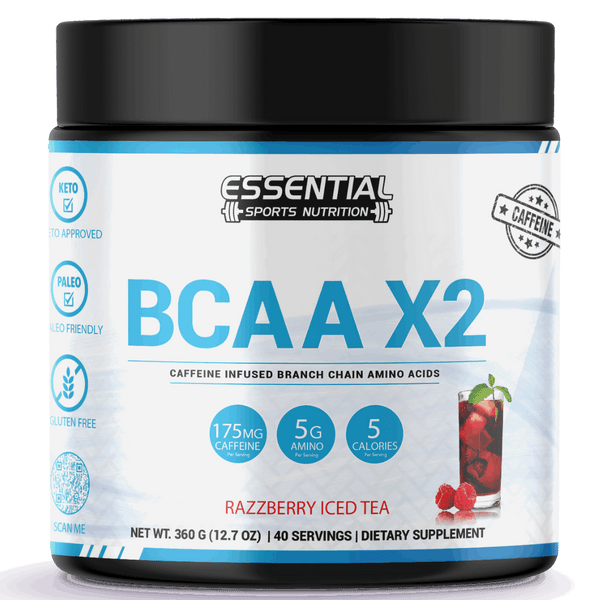Close Grip Bench Press Proper Form, Benefits, to Build Your Triceps
To master the close-grip bench press, position your hands closer than in a traditional bench press. Ensure elbows are near your body to reduce shoulder strain and stabilize shoulder position for a full range of motion. Benefits include enhanced tricep strength and growth, improved pushing strength, and varied muscle engagement. Avoid mistakes like incorrect hand placement and using excessive weight. Try variations like medium grip or reverse grip for different muscle targeting. Incorporate chains or bands for added resistance. Discover safer alternatives like close-grip push-ups. Enhance your upper body strength with this efficient exercise and its variations.

Key Takeaways
- Proper form: Hands close, elbows in, shoulder stabilization.
- Benefits: Tricep strength, enhanced bench press performance.
- Common mistakes: Incorrect hand placement, elbow flaring.
- Variations: Close, medium, wide grips; reverse grip.
- Incorporating chains or bands for added resistance and gains.
Proper Form and Benefits of Close-Grip Bench Press
Enhancing tricep strength and promoting well-rounded upper body development, the Close-Grip Bench Press is a targeted exercise that significantly benefits muscle growth and performance. This exercise optimizes tricep development by primarily targeting the triceps, shifting the focus from the upper chest. Additionally, engaging the pectoral muscles and anterior deltoids as secondary muscle groups guarantees thorough upper-body training. Strengthening the triceps through the Close-Grip Bench Press can enhance bench press performance and improve pushing strength. The exercise also promotes better muscle activation, increased range of motion, and individual arm movement, ultimately contributing to balanced upper body strength.
| Benefits of Close-Grip Bench Press |
|---|
| Targets triceps for enhanced strength and growth |
| Emphasizes tricep development over upper chest |
| Engages pectoral muscles and anterior deltoids |
| Improves bench press performance and pushing strength |
| Enhances muscle activation, range of motion, and arm movement |
Proper Form of Close-Grip Bench Press
To execute the Close-Grip Bench Press correctly, ensure your hands are positioned closer together than in the traditional bench press, emphasizing tricep engagement for best results. This narrower grip targets the triceps more effectively. Maintaining proper form by keeping your elbows close to your body is essential. This minimizes shoulder strain while maximizing tricep activation. Focus on stabilizing your shoulder position throughout the movement to guarantee full range of motion and peak tricep engagement. By following these form guidelines, you can efficiently overload the triceps while reducing the risk of injury. The close-grip technique is valuable for enhancing tricep strength and overall upper-body muscle development. Remember, correct execution not only improves the effectiveness of the exercise but also helps prevent unnecessary strain on your shoulders. Mastering the proper form of the Close-Grip Bench Press is key to reaping its full benefits.
Safety Measures and Common Close-Grip Bench Press Mistakes
Improper hand placement and elbow flaring are common mistakes to avoid when performing the Close-Grip Bench Press to guarantee maximum tricep activation and shoulder safety. Placing your hands too close together or too far apart can reduce tricep engagement and limit the exercise's effectiveness. Additionally, allowing your elbows to flare out during the movement places unnecessary strain on the shoulders and can lead to improper form.
Here are some common mistakes to steer clear of when executing the Close-Grip Bench Press:
- Incorrect hand placement can reduce tricep activation and lead to inefficient muscle engagement.
- Elbow flaring during the movement can strain the shoulders and compromise form.
- Using too heavy of a weight initially can increase the risk of injury and limit proper muscle targeting.
- Not maintaining proper grip and body positioning can hinder progress and increase the chance of injury.
Safety Measures for Close-Grip Bench Press
Utilizing a spotter or a smith machine can enhance safety during the close-grip bench press. A spotter can provide assistance in case you struggle with the weight or need help re-racking the barbell. A smith machine offers a guided bar path, reducing the risk of the bar falling uncontrollably.
Proper hand placement and elbow positioning are essential to prevent injuries. Placing your hands closer together than in a standard bench press targets the triceps but requires careful attention to form. Avoid bouncing the bar off your chest, which can strain the shoulders. Adjust the resistance to a challenging yet manageable level to prevent overexertion.
Keep your hips planted on the bench throughout the exercise to maintain stability and reduce the risk of straining your lower back. Focus on controlled movements both on the way down and up to maximize effectiveness and minimize the chance of injury. If you experience any discomfort during the exercise, it is important to stop immediately to prevent potential injuries.
Variations of Close-Grip Bench Press
When exploring variations of the close-grip bench press, you can consider hand placement options, such as the EZ bar or dumbbells with palms facing each other. These variations offer unique benefits compared to the standard close-grip bench press, allowing for different muscle engagement and targeting. Incorporating chains or bands can add resistance and challenge your muscles in new ways, making your workouts more dynamic and effective.
Hand Placement Options
For ideal tricep engagement during the close grip bench press, the placement of your hands closer together, typically around 6-8 inches apart, is essential. Experimenting with hand placement variations allows for customization based on individual tricep strength and goals. Here are some options to explore:
- Close Grip: Hands positioned around 6-8 inches apart target triceps effectively during the exercise.
- Medium Grip: Placing hands slightly wider than shoulder-width can provide a balance between triceps and chest engagement.
- Wide Grip: Widening hand placement shifts focus from triceps to chest muscles.
- Reverse Grip: Using an underhand grip can further isolate the triceps and engage forearm muscles.
Customizing your hand placement can optimize tricep activation while reducing strain on shoulder joints.
Benefits Compared to Standard
Comparing the benefits of variations in the close-grip bench press to the standard grip reveals distinct advantages for targeting triceps and enhancing strength in the upper body muscles. The close grip bench press effectively emphasizes tricep activation over chest engagement, making it a valuable exercise for those looking to work on their triceps specifically. By shifting the focus from the pecs to the triceps, this variation promotes muscle development in the tricep area and increases strength, leading to improved lockout performance. Additionally, the close-grip bench press provides a different stimulus for the upper body muscles than the standard bench press, helping diversify your training routine and promote overall muscle development in the upper body.
Incorporating Chains or Bands
To enhance the effectiveness of your close-grip bench press routine, consider incorporating chains or bands for added muscle activation and resistance variability. This variation can provide a new challenge and help you break through plateaus in your training. Here are some benefits of incorporating chains or bands:
- Chains offer accommodating resistance, challenging muscles at different points.
- Bands increase tension at the top of the movement, enhancing lockout strength and tricep engagement.
- Using chains or bands can improve strength, power, and muscle endurance.
- This dynamic exercise variation can lead to increased muscle activation and overall performance gains.
Close-Grip Bench Press With EZ Bar
Exploring the EZ bar's benefits in close-grip bench press exercises can optimize tricep engagement and minimize wrist strain, enhancing both comfort and effectiveness in your workouts. The EZ bar's angled grips are designed to reduce wrist strain, allowing for a more natural hand position that effectively targets the triceps. Compared to a straight bar, the EZ bar can enhance muscle activation and reduce discomfort, providing a more comfortable and stable grip during close-grip bench press movements.
Incorporating the EZ bar into your close-grip bench press routine adds diversity to your tricep training regimen. The unique design of the EZ bar reduces strain on your wrists and allows for a more focused tricep workout. Utilizing the EZ bar allows you to engage your triceps more effectively while maintaining proper form and minimizing the risk of discomfort or injury. Next, let's explore the benefits of performing close-grip bench press with dumbbells for further variations in your training routine.
Close-Grip Bench Press With Dumbbells
When advancing from the close-grip bench press with an EZ bar, moving on to using dumbbells can further enhance tricep engagement and provide a broader range of motion for targeted muscle development. The dumbbell close-grip bench press offers several advantages:
- Effective Tricep Targeting: Dumbbells allow for a greater range of motion, enabling you to engage your triceps more effectively than with a standard grip.
- Enhanced Range of Motion: Using dumbbells permits individual arm movement, ensuring each tricep is worked to its full potential.
- Stabilizing Muscle Engagement: This variation engages stabilizing muscles, promoting better control and balance throughout the movement.
- Muscle Imbalance Correction: By working each arm independently, the dumbbell close-grip bench press can help correct muscle imbalances between your left and right sides.
Incorporating dumbbells into your close-grip bench press routine adds diversity and challenges your muscles in new ways, contributing to a well-rounded tricep workout regimen.
Increasing Resistance in Close-Grip Bench Press
To increase resistance in your close-grip bench press, consider adding more weight gradually to challenge your triceps and enhance strength gains. Adjusting your hand placement can also intensify the resistance on your triceps and help you progress effectively. Additionally, incorporating resistance bands into your workouts can provide variability and further challenge your upper body strength during close-grip bench press sessions.
Adding More Weight
For effective progression in your close-grip bench press routine, incrementally increasing the weight by 5-10 pounds is recommended to stimulate muscle growth and enhance strength gains. When adding more weight, consider the following:
- Gradually increase weight to challenge your muscles and promote strength gains.
- Aim for small weight increments of 1-2.5% to guarantee steady progress.
- Incorporate resistance bands or chains for variable resistance training.
- Focus on maintaining proper form and technique as you increase the weight to prevent injuries.
Adjusting Hand Placement
As you focus on maximizing triceps activation and increasing resistance in your close-grip bench press, adjusting your hand placement closer together is essential for targeting this muscle group effectively. Narrowing your grip challenges your triceps more intensely, promoting strength and endurance gains. Here is a table illustrating the benefits of adjusting hand placement in close grip bench press:
| Benefits of Adjusting Hand Placement |
|---|
| Targets triceps effectively |
| Increases resistance for triceps activation |
| Minimizes shoulder strain |
| Enhances muscle engagement |
| Efficient triceps recruitment for muscle growth |
Using Resistance Bands
When integrating resistance bands into your close-grip bench press routine, you introduce a dynamic element that enhances muscle activation and challenges stabilizing muscles throughout the movement. Here are some key points to take into account:
- Resistance bands can be used to add variable resistance to the close-grip bench press.
- They increase resistance at the top of the movement where the triceps are most engaged.
- Resistance bands provide a different stimulus to the muscles compared to traditional free weights.
- Using bands challenges stabilizing muscles and enhances muscle activation throughout the lift.
Incorporating resistance bands can help you push past plateaus, improve strength, and stimulate muscle growth effectively. Experiment with different band tensions to find the resistance level that suits your current fitness level and goals.
Close-Grip Bench Press Alternatives
Seeking alternatives to the Close-Grip Bench Press? Explore Close-Grip Push-Ups, Dumbbell Floor Press, and Tricep Dips as fantastic options to target similar muscle groups and add variety to your workout routine. These exercises can effectively strengthen your triceps and chest, providing a diverse range of movements to challenge your muscles.
Close-Grip Push-Ups
Close-grip push-ups effectively target the triceps by utilizing a narrower hand placement, providing a thorough upper-body workout and engaging the chest and shoulders as secondary muscles. They are a versatile exercise option that can be performed anywhere without the need for equipment. Here are some key benefits of incorporating close-grip push-ups into your workout routine:
- Convenient bodyweight exercise
- Builds arm strength and muscle definition
- Safer alternative for those with shoulder concerns
- Engages multiple muscle groups for a full upper-body workout
Dumbbell Floor Press
Consider incorporating the dumbbell floor press as a close-grip bench press alternative to effectively target the triceps and chest muscles while emphasizing stability and control. This exercise, performed lying on the floor, is excellent for isolating the triceps and preventing excessive strain on the shoulders. By eliminating the bench, the dumbbell floor press offers a unique way to enhance arm strength and muscle development. The stability provided by the floor helps you focus on proper form and control throughout the movement. This variation particularly benefits individuals looking to strengthen their triceps without compromising shoulder health. Adding the dumbbell floor press to your routine can diversify your workouts and contribute to a well-rounded upper-body strength training regimen.
Tricep Dips
If you are aiming to strengthen your triceps and upper body muscles effectively, consider incorporating tricep dips into your workout routine as a beneficial alternative to the close-grip bench press. Tricep dips target the triceps, chest, and shoulders effectively. They require only body weight or added resistance for a challenging workout. Triceps exercises can be performed on parallel bars, benches, or even the floor. They help improve pushing strength and overall upper-body muscle endurance. This versatile bodyweight exercise is suitable for all fitness levels, making it a great addition to any workout regimen.
Muscles Targeted in Close-Grip Bench Press
Engaging in the close-grip bench press targets specific muscles essential for upper body strength and stability. The triceps brachii, vital for elbow extension and stabilization, are the primary muscle engaged during this exercise. Additionally, the pectoralis major, the main chest muscle, plays a significant role in bringing the arms together and stabilizing the shoulder joint. The anterior deltoids, the front shoulder muscles, are also activated, aiding in raising the arms and providing support for upper body stability throughout the movement. By working in unison, these muscles enhance shoulder health and functionality and contribute to overall upper-body strength development. The close-grip bench press effectively isolates and engages these specific muscle groups, making it a valuable exercise for individuals looking to improve their upper body strength and stability efficiently.
Conclusion

To sum up, mastering the proper form of close-grip bench press can lead to numerous benefits, including increased tricep strength and overall upper body development. Remember, Rome wasn't built in a day, so be patient and consistent in your training. Just like a sculptor chisels away at a masterpiece, each rep brings you closer to your fitness goals. Keep pushing yourself, stay focused, and watch as your hard work pays off in the form of a stronger, more defined physique.
Close-Grip Bench Press Variations, Benefits, and Muscles Worked FAQs
Q: Which muscles are worked by the close-grip bench press?
A: The close-grip bench press primarily works the triceps, with additional engagement of the chest and shoulders.
Q: What are some common close-grip bench press mistakes to avoid?
A: Some common mistakes include using too much weight, flaring out the elbows, and not maintaining proper form throughout the movement.
Q: Are there variations of the close-grip bench press?
A: Yes, variations include the close-grip dumbbell bench press, close-grip floor press, and narrow-grip bench press.
Q: What are some alternatives to the close-grip bench press?
A: The incline bench press, dumbbell bench press, and wide-grip bench press are alternatives to target different muscle groups.
Q: How important is the grip position in a close-grip bench press?
A: The grip position is crucial as a closer grip emphasizes the triceps more, while a wider grip may shift the focus to the chest and shoulders.
Q: What are the Benefits of the Close-Grip Bench Press?
A: A close-grip bench press boosts triceps strength. It hones arm definition, enhances pushing power, and engages chest and deltoids. You can improve overall upper body strength, balance, and bench press performance by targeting the triceps specifically.
Q: How to Do a Close Grip Bench Press with Proper Form?
A: To properly do the close-grip bench press, position yourself on a flat bench, retract your shoulder blades, and grip the bar slightly narrower. Lower the barbell to your chest, then drive it back up for effective muscle engagement.
Q: What Are the proper Forms and techniques for bench press?
A: To perform a bench press correctly, grip the bar slightly wider than shoulder-width apart, lower it to your mid-chest, and press it up. Keep your back arched and feet planted for stability. Engage your chest and triceps muscles throughout.
Q: Should I Go All the Way Down on the Close-Grip Bench Press?
A: You absolutely want to go all the way down on a close-grip bench press! The full range of motion maximizes tricep activation, leading to better muscle growth and strength gains. Embrace the burn and push through for best results.























